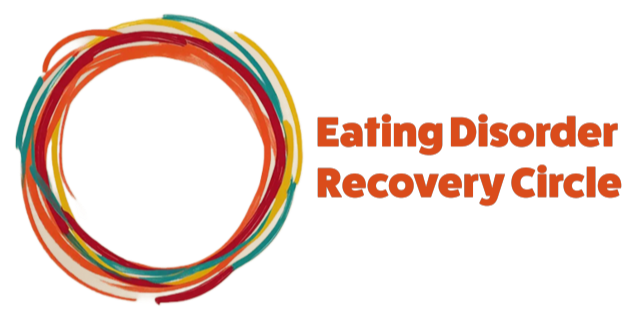How to Manage Recovery When You Still Live at Home
Mar 08, 2025Recovering while living at home can be challenging, especially if your family doesn’t fully understand eating disorders or if they unintentionally reinforce unhelpful behaviours. You may feel like you have less control over your environment, meals, or personal space, making it harder to challenge fear foods, let go of food rules, or eat enough.
But recovery is possible—even in a home environment that doesn’t always feel recovery-friendly. This guide will help you navigate food, family dynamics, and triggers step by step.
If this brings up frustration, fear, or feeling trapped, check the Feelings Navigator for tools on managing emotions like loss of control, overwhelm, or anxiety around food.
Step 1: Identify Your Biggest Challenges at Home
Living at home affects recovery in different ways. Start by identifying your specific struggles, so you can find ways to navigate them.
🔹 Are family meals stressful? (e.g., pressure to eat everything, feeling watched)
🔹 Do family members make triggering comments? (“Are you sure you want that?”)
🔹 Do you feel restricted in food choices? (e.g., parents control what’s bought, limited options)
🔹 Are there diet culture influences at home? (e.g., constant talk about weight, calories, exercise)
💡 Once you pinpoint the hardest aspects, you can focus on making small changes that build over time.
🎯 Repetition is key: Regularly assess and adjust what’s working and what isn’t—recovery is not one-size-fits-all.
Step 2: Communicate Your Needs (Even If It Feels Uncomfortable)
If your family doesn’t understand your recovery process, educating them—even a little—can help. You don’t need to share everything, but setting basic boundaries can reduce stress.
🔹 Explain what’s helpful vs. harmful.
- Helpful: Providing food without judgment, supporting meal consistency
- Harmful: Commenting on portions, food choices, or body changes
🔹 Use simple, direct phrases to set boundaries.
✔ “I need to eat enough in recovery, and comments about food make that harder.”
✔ “It would really help if we didn’t talk about weight or calories at meals.”
✔ “Please trust that I know what my body needs, even if it’s different from before.”
🔹 If they resist or don’t understand, remind yourself: You can’t control their responses, only your own actions.
🎯 Repetition is key: Keep reinforcing these boundaries—change takes time.
📌 If you’re struggling with setting boundaries, the Fear of Weight Gain Course includes strategies for handling external pressure.
Step 3: Create a Recovery-Friendly Environment (As Much as Possible)
Even if you can’t control everything at home, you can make small changes to reduce triggers and support recovery.
✔ Stock foods that challenge restriction. If your family does the shopping, ask to add recovery-supportive foods to the list.
✔ Make meals easier. Pre-prepare snacks or meals if family mealtimes are stressful.
✔ Limit exposure to triggering content. If family members are dieting, try to disengage from weight or food talk.
💡 If your family refuses to adjust, focus on what you can do. Even small choices—like keeping your own snack stash—help reinforce recovery.
🎯 Repetition is key: The more you practice eating freely at home, the easier it becomes.
Step 4: Challenge Food Rules & Fear Foods in a Safe Way
Many people cling to old habits at home because it feels safer. But if you only recover in controlled environments, it keeps you stuck in quasi-recovery.
💡 How to challenge food fears at home:
✔ Eat “off-limits” foods when no one is watching. This can feel less overwhelming.
✔ Try eating a challenge food during a family meal. If this feels too much, start small—one bite, one meal, then build.
✔ Remind yourself that normal eating happens at home. If you can only eat fear foods outside the house, your recovery isn’t complete.
🎯 Repetition is key: The more you eat fear foods in your home environment, the less control they have over you.
📌 Struggling with this? Read “How to Eat a Fear Food for the First Time” for a structured approach.
Step 5: Find Support Outside Your Household
If your family doesn’t fully understand, it can feel isolating—but you don’t have to go through recovery alone.
🔹 Connect with people who get it. Join discussions inside The Circle, where others are navigating recovery at home too.
🔹 Find an accountability partner. Someone who can check in and support you when home life feels tough.
🔹 Use external resources. Podcasts, books, and online communities can provide perspective and encouragement.
🎯 Repetition is key: Engaging with recovery-focused people and spaces consistently will help balance out unhelpful influences at home.
📌 The Circle is a space where you don’t have to explain your struggles—everyone there already understands.
When to Seek Extra Support
If your home environment is actively harming your recovery—for example, if you’re being forced into restriction, body-shaming, or excessive exercise—it’s okay to seek outside help.
📌 If weight gain fear is holding you back at home, take the Fear of Weight Gain Course to work through it step by step.
Next Steps
🎯 If family comments or diet culture at home are overwhelming, visit the Feelings Navigator for “overwhelm” and “fear” tools.
🎯 If eating at home feels impossible, read “How to Challenge Food Rules” to help shift your mindset.
🎯 Join The Circle discussions—others have been through this and can help you navigate the challenges.
Final Reminder
Recovery does not require the perfect environment—it requires commitment to healing, no matter where you are.
🚀 You can recover while living at home. Keep practicing, keep reinforcing your boundaries, and keep choosing recovery—until it becomes your new normal. ❤️

